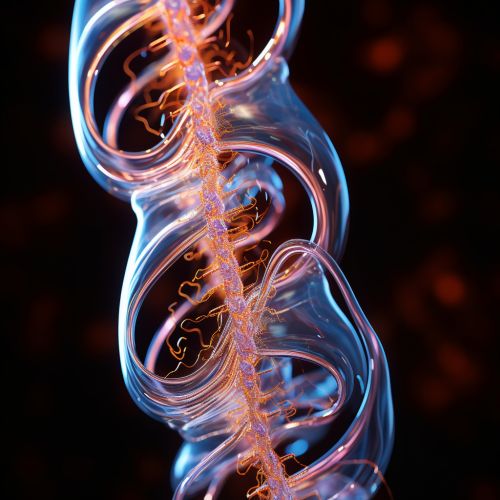Flagella
Introduction
A flagellum is a lash-like appendage that protrudes from the cell body of certain prokaryotic and eukaryotic cells. The primary role of the flagellum is locomotion, but it also often has function as a sensory organelle, being sensitive to chemicals and temperatures outside the cell.


Structure and Composition
Flagella are structurally complex, composed of more than 20 different types of proteins. The flagellum is divided into three parts: the filament, the hook, and the basal body. The filament is the whip-like structure that extends from the cell. The hook connects the filament to the basal body, which is embedded in the cell membrane.
Filament
The filament, the longest and most visible part of the flagellum, is a helical structure composed of a protein called flagellin. Flagellin molecules are arranged in a precise, repeating pattern to form the helical chain of the filament.
Hook
The hook is a flexible joint that connects the filament to the basal body and acts as a universal joint in the flagellum. It is made up of a protein called FlgE.
Basal Body
The basal body is the motor of the flagellum, embedded within the cell's plasma membrane. It is a complex structure composed of several rings of proteins, and it uses the energy derived from the proton motive force to power the rotation of the flagellum.
Function
Flagella are primarily used by cells for movement. The rotation of the flagellum propels the cell forward, allowing it to navigate through its environment. This type of movement is known as flagellar locomotion.
In addition to locomotion, flagella also serve as sensory organelles. They can detect changes in the chemical composition and temperature of the environment, a process known as chemotaxis and thermotaxis respectively.
Flagella in Different Organisms
While the basic structure and function of flagella are similar across different organisms, there are some notable differences.
Prokaryotic Flagella
In prokaryotes, such as bacteria, flagella are relatively simple in structure. They rotate like a propeller to move the cell, and their rotation is powered by a flow of hydrogen ions (protons) across the cell membrane.
Eukaryotic Flagella
In contrast, eukaryotic flagella, found in organisms such as protozoa and sperm cells, are more complex. They have a "9+2" structure of microtubules and are surrounded by the cell's plasma membrane. Instead of rotating, eukaryotic flagella move in a wave-like motion.
Evolution of Flagella
The evolution of flagella is a topic of ongoing research and debate among scientists. One popular theory is the flagellar evolution theory, which proposes that flagella evolved from a secretory system in the ancestral cell.
